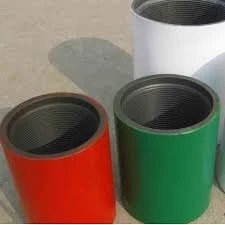- Afrikaans
- Albanian
- Amharic
- Arabic
- Armenian
- Azerbaijani
- Basque
- Belarusian
- Bengali
- Bosnian
- Bulgarian
- Catalan
- Cebuano
- Corsican
- Croatian
- Czech
- Danish
- Dutch
- English
- Esperanto
- Estonian
- Finnish
- French
- Frisian
- Galician
- Georgian
- German
- Greek
- Gujarati
- Haitian Creole
- hausa
- hawaiian
- Hebrew
- Hindi
- Miao
- Hungarian
- Icelandic
- igbo
- Indonesian
- irish
- Italian
- Japanese
- Javanese
- Kannada
- kazakh
- Khmer
- Rwandese
- Korean
- Kurdish
- Kyrgyz
- Lao
- Latin
- Latvian
- Lithuanian
- Luxembourgish
- Macedonian
- Malgashi
- Malay
- Malayalam
- Maltese
- Maori
- Marathi
- Mongolian
- Myanmar
- Nepali
- Norwegian
- Norwegian
- Occitan
- Pashto
- Persian
- Polish
- Portuguese
- Punjabi
- Romanian
- Russian
- Samoan
- Scottish Gaelic
- Serbian
- Sesotho
- Shona
- Sindhi
- Sinhala
- Slovak
- Slovenian
- Somali
- Spanish
- Sundanese
- Swahili
- Swedish
- Tagalog
- Tajik
- Tamil
- Tatar
- Telugu
- Thai
- Turkish
- Turkmen
- Ukrainian
- Urdu
- Uighur
- Uzbek
- Vietnamese
- Welsh
- Bantu
- Yiddish
- Yoruba
- Zulu
casing and tubing connections
Understanding Casing and Tubing Connections in the Oil and Gas Industry
Casing and tubing connections are pivotal components in the oil and gas industry, playing a crucial role in the drilling, production, and overall operational efficiency of wells. These connections ensure the integrity and safety of well operations while accommodating the various pressures and environmental conditions found underground.
The Basics of Casing and Tubing
To grasp the significance of casing and tubing connections, it's essential to understand the distinction between casing and tubing. Casing refers to the large-diameter pipes that are installed in a wellbore after drilling. Their primary purpose is to support the well structure, prevent the collapse of the borehole, and isolate different pressure zones. Tubing, on the other hand, consists of smaller-diameter pipes that are inserted within the casing. Tubing is responsible for transporting oil or gas from the reservoir to the surface.
Types of Connections
Casing and tubing connections are designed to provide a robust interface between individual pipe sections, ensuring a leak-free transition under challenging conditions. The most commonly used connections include
1. Threaded Connections This traditional connection style utilizes tapered threads that engage when two threaded pipe ends are screwed together. Although these connections are well-understood and widely used, they can be prone to fatigue and are not always suitable for high-pressure environments.
2. Welded Connections In some applications, particularly where high pressure and temperature are a concern, welded connections may be favored. This type of connection involves welding the ends of the pipes together, providing a continuous and robust joint. However, welding can introduce complications such as residual stresses and requires skilled labor and equipment.
3. Slip-on and Butt-welded Connections Used primarily in specific applications, slip-on connections are easy to install, allowing pipes to slide over one another. Butt-welded connections provide a more secure option, as the ends are welded together, but they require precise alignment.
4. Premium Connections Premium connections are specially designed for high-performance applications. These are machined and tested to a higher standard than conventional connections. Gasket sealing, enhanced strength, and greater resistance to fatigue are crucial characteristics of premium connections, making them suitable for extreme environments.
Factors Influencing Connection Selection
casing and tubing connections

Selecting the appropriate casing and tubing connection is critical for overall operational success and safety. Several factors must be considered
- Pressure and Temperature The maximum anticipated pressure and temperature during the well's life significantly influence the choice of connection
. High-pressure environments often necessitate the use of premium or welded connections.- Well Depth and Conditions The depth of the well and geological conditions can create unique challenges. Casing connections must withstand not just the column of fluid above but also the mechanical stresses exerted by surrounding rocks.
- Fluid Characteristics The type of fluids being transported can affect the longevity and reliability of the connections. For example, corrosive fluids may require specific alloys or protective treatments to prevent degradation.
- Cost and Economics While robustness is essential, economic considerations cannot be overlooked. The selection process often involves balancing performance with cost-effectiveness.
The Importance of Maintenance and Inspection
Regular maintenance and inspection of casing and tubing connections are vital to ensure their integrity over time. Advanced technologies such as ultrasonic testing and magnetic particle inspection can detect issues at an early stage, preventing catastrophic failures.
Moreover, advancements in materials science and connection technology continue to evolve, leading to innovations that enhance the performance of casing and tubing systems. The industry is moving towards smarter, more resilient connections that can withstand the ever-increasing demands of modern drilling techniques.
Conclusion
In summation, casing and tubing connections are foundational to the successful and safe operation of oil and gas wells. A thorough understanding of different connection types, the factors that influence their selection, and the importance of maintenance can significantly impact operational efficiency and safety. As technology advances, the future promises even more effective solutions to meet the challenges posed by the dynamic environments in which the oil and gas industry operates.
-
Tubing Pup Joints: Essential Components for Oil and Gas OperationsNewsJul.10,2025
-
Pup Joints: Essential Components for Reliable Drilling OperationsNewsJul.10,2025
-
Pipe Couplings: Connecting Your World EfficientlyNewsJul.10,2025
-
Mastering Oilfield Operations with Quality Tubing and CasingNewsJul.10,2025
-
High-Quality Casing Couplings for Every NeedNewsJul.10,2025
-
Boost Your Drilling Efficiency with Premium Crossover Tools & Seating NipplesNewsJul.10,2025







